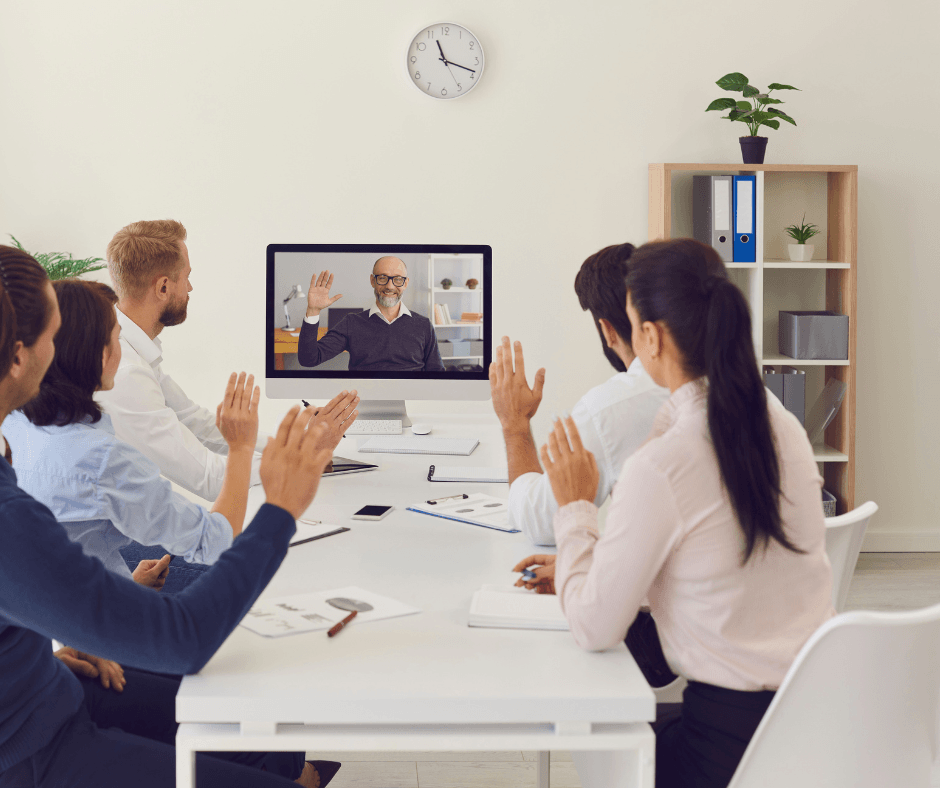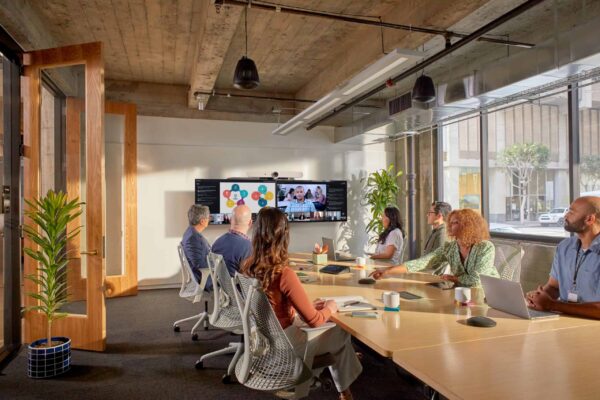Hybrid meetings have emerged as a powerful solution to bridge the gap between in-person and virtual interactions. This is a meeting structure which has been familiar to many New Zealand based organisations for some time due to our location. Those that operate across the country and globally have always had the challenge of bringing people together for face to face meetings. Covid restrictions then amplified the need for both virtual meetings and hybrid meetings. Hybrid meetings are when in-person attendees simultaneously meet with virtual attendees. The pairing of these technology disparate attendees can lead to technological issues that impact the success of the meeting. As a technology provider for over 30 years, we’ve come across all the pain points businesses face when conducting hybrid meetings. Therefore our team has put together this troubleshooting blog about remote and onsite meeting coordination, so you can host the ultimate hybrid meeting, every time. Read on for tips for successful hybrid meetings.
Technical Hurdles: Meeting Technology, Meeting Room Set-Up, and Meeting Room/Hybrid Meeting Training
Technical hurdles are by far the number one pain point we hear about at Connect NZ. Clients come to us after experiencing frustrating technology issues with their meeting rooms, looking for hybrid meeting strategies. Building out a seamless meeting experience requires the right technology and know- how, as well as appropriate hybrid meeting tools and hybrid meeting software. However a frequent problem is that meeting rooms have been cobbled together with various tech over several months or years – and components are not compatible with each other – or require complicated work-arounds that cannot be relied upon with multiple users.
Our team frequently receives feedback from customers across New Zealand who, after engaging non-Microsoft certified audiovisual firms or existing partner IT companies post-COVID for their meeting room setups, faced subpar installations with insufficient ongoing support. For all our customers, we offer a commitment-free consultation and evaluation, addressing any issues to elevate their setups to the desired standard. We ensure the implementation of certified devices and provide comprehensive support thereafter. Our wrap-around support agreement guarantees optimal uptime and minimises issues.
This approach enables them to retain the bulk of their existing investment while benefiting from proper installation and support through a Microsoft certified meeting room partner.
However if you’ve got a mix and match set up for your meeting room and it’s not working as you’d like, it’s time for an audit. Many of our clients are unaware of this audit option, yet it can be just the fix when current cash flow does not allow for a full room fit-out. Our team is experienced in ‘weeding’ aspects of your meeting room tech that are causing connectivity issues, and getting the most out of the tools that are in place.
Training is essential for your team to quickly and confidently utilise the meeting room technology required for hybrid meetings. Knowing how to use the tools both encourages uptake of the technology, as well as reducing breakage. When we fit-out meeting rooms training comes as part of the package.
Security Concerns for Hybrid Meeting Solutions: Data and Privacy
Balancing accessibility and security can be challenging in modern business. Modern businesses work digitally and share information across multiple platforms, sites and users. Your cyber security programmes and policies must cover virtual and hybrid meetings. At Connect NZ, we’re serious about cyber security, and keeping your organisation information safe.
New Zealand’s government sets mandatory IT security regulations, which industries need to comply with. As the security landscape evolves, so do these regulations. When we fit out a meeting room we work with you to reduce complexity and increase cyber security and data protection to meet compliance obligations.
As part of a meeting room fit-out Connect NZ collaborates closely with your business to perform a Virtual Security Assessment. We analyse your current security system, then based on our findings, we determine your improvement plan. These suggested security measures cover digital and hybrid meetings. If you’re going it alone make sure to address security concerns by:
- Implementing Security Measures: Use secure meeting platforms and encrypt sensitive data.
- Reviewing Access Control: Control access to sensitive information and ensure data privacy. Not everyone needs to receive the same access. Make sure to carefully control what attendees can access and how they can use that information.
Seamless Hybrid Meetings: Combining Virtual and Physical Meetings
Creating a seamless experience for both virtual and physical participants is essential. To achieve this we’ve found it best to optimise meeting rooms configuration. It sounds obvious, but for hybrid events something as simple as an inclusive seating arrangement helps in-person and virtual attendees engage smoothly. Arrange seating and camera’s so that ALL participants can make eye contact with each other.
Appropriate audio-visual solutions play a central role here in engaging remote and in-person attendees. Grainy and pixelated video and scratchy audio halts human interaction.
Effective Hybrid Communication: Engagement and Participation in Hybrid Meetings
Finding ways to engage remote and in-person attendees and encourage collaboration can be challenging. To foster engagement and maintain an inclusive environment for virtual and in-person collaboration, try utilising interactive tools like polls, chat, and Q&A sessions to involve all participants and create opportunities for active participation. Prepare participants ahead of time, letting them know they will be called upon for their interaction, opinions and knowledge. Rotating speaking turns between those physically present and those attending virtually ensures that all attendees have equal opportunities to contribute to discussions.
Consider the needs of all participants when planning the meeting and design it for inclusivity. Is the meeting appropriately accessible for all attendees? Choose platforms and tools that offer accessibility features, such as closed captions and screen readers. Also ensure the meeting is timed to be appropriate for all time zones of attendees.
Hybrid Meeting Post Meeting Tasks
To ensure the meeting both creates and maintains momentum, after hosting hybrid meetings send a meeting recap email. This re-cap should highlight the key areas discussed, decisions made, as well as next steps and action points. This document can then be used by all participants to refer back to, and to set them toward tasks discussed during the meeting.
Hybrid meetings represent a pivotal shift in how we conduct business and engage with colleagues, clients, and partners. They offer the flexibility to combine in-person and virtual elements, catering to a diverse range of participants, and fostering collaboration between teams. However as outlined above to get the most out of them hybrid meeting best practices must be followed. Whether you’re in Wellington, Auckland, anywhere in New Zealand or anywhere in the world, Connect NZ ensures that you have the tools, knowledge and hybrid meeting solutions to host successful hybrid meetings. Reach out to our team today.














